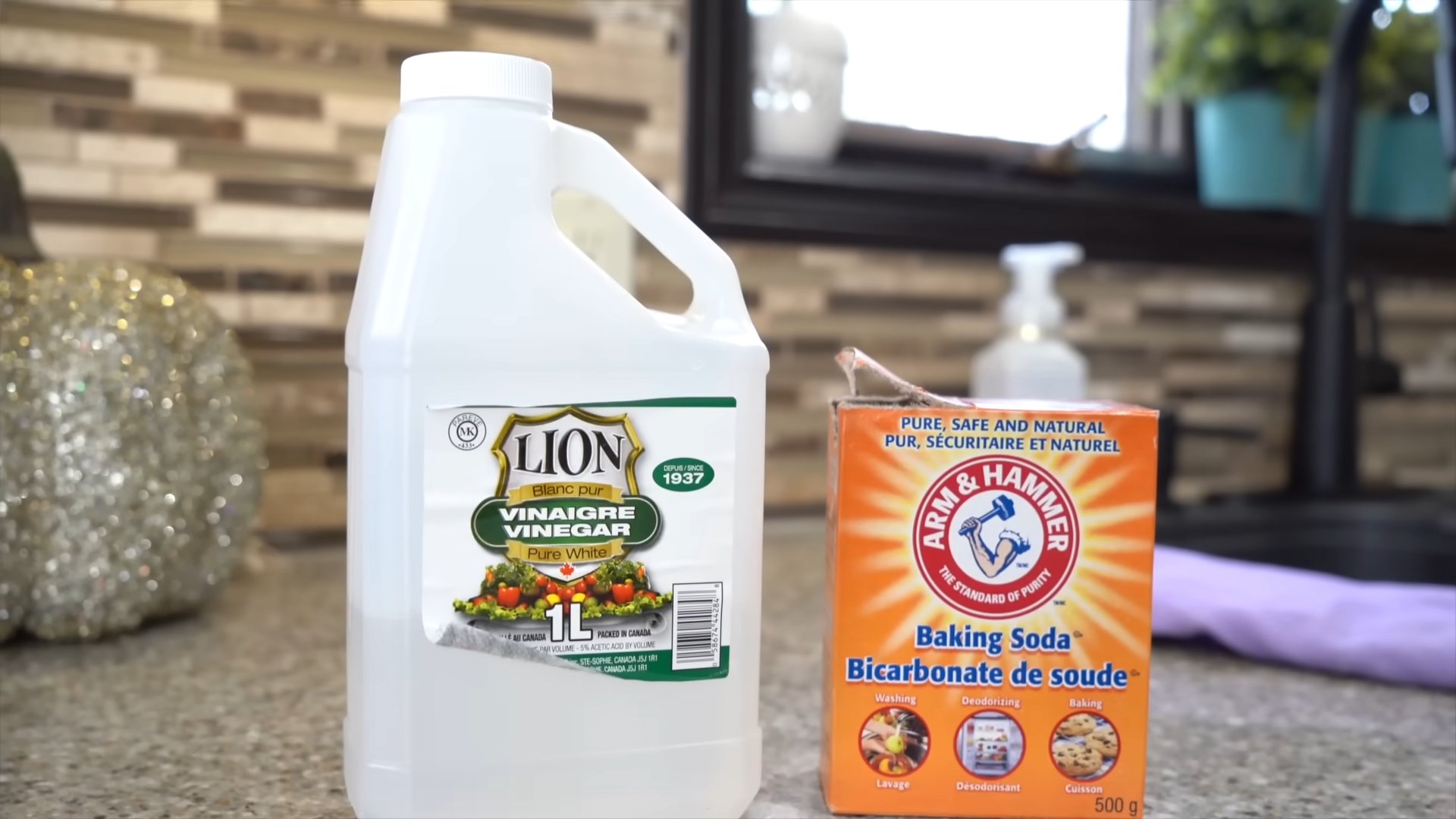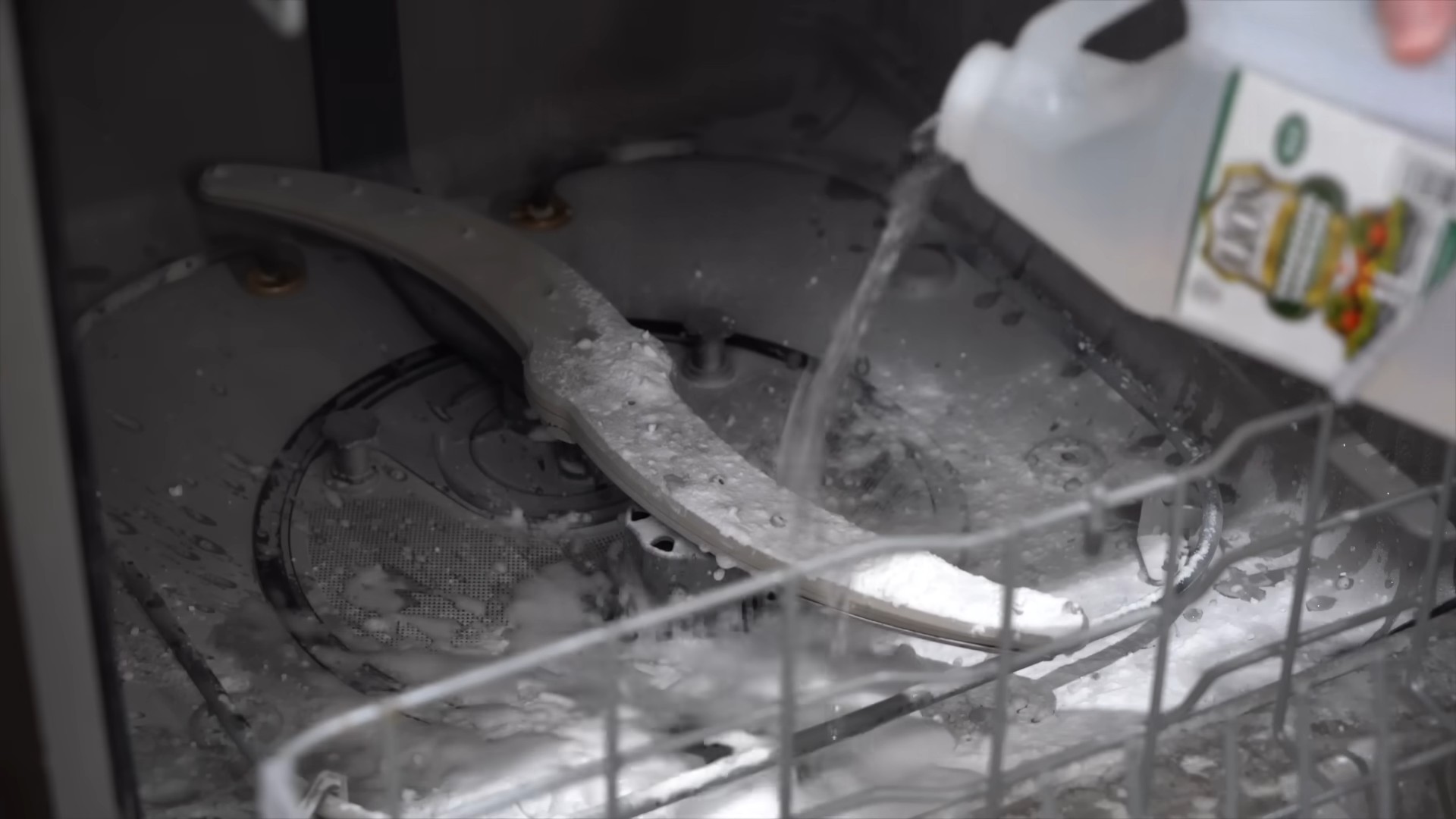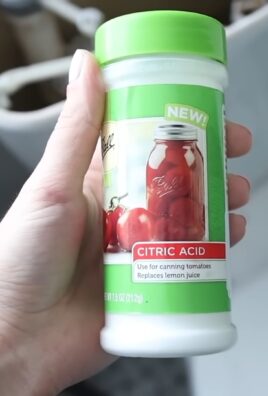Baking Soda Vinegar Hacks: Unlock the Secrets to a Sparkling Clean and Thriving Home!
Have you ever looked at a stubborn stain or a struggling plant and wished you had a magic wand? Well, I’m here to tell you that you practically do! For generations, folks have relied on the dynamic duo of baking soda and vinegar for everything from cleaning to cooking. Think of your grandmother’s secret cleaning recipes – chances are, these two humble ingredients were the stars. Their versatility is legendary, and now, I’m going to share some incredible DIY tricks that will transform your home and garden.
Why are these baking soda vinegar hacks so essential? Because they’re effective, eco-friendly, and budget-friendly! In a world overflowing with harsh chemicals and expensive solutions, these natural alternatives offer a safer and more sustainable way to tackle everyday challenges. From banishing mildew in your bathroom to boosting the health of your garden soil, the possibilities are endless.
This article is your ultimate guide to harnessing the power of baking soda and vinegar. I’ll walk you through simple, step-by-step DIY projects that will save you time, money, and a whole lot of frustration. Get ready to discover the magic of these pantry staples and unlock a cleaner, greener, and happier home!

Unleash the Power Duo: Amazing DIY Hacks with Baking Soda and Vinegar!
Hey there, fellow DIY enthusiasts! Get ready to be amazed because today, we’re diving deep into the wonderful world of baking soda and vinegar. These two humble ingredients, often found lurking in our pantries, are actually a powerhouse of cleaning, deodorizing, and even beauty hacks! I’m going to show you some of my favorite ways to use them, and trust me, you’ll be hooked.
Cleaning Powerhouse: Baking Soda and Vinegar to the Rescue!
This dynamic duo creates a fizzing action that’s perfect for loosening grime and dirt. Remember to always test in an inconspicuous area first, especially on delicate surfaces.
Unclogging Drains Like a Pro
Clogged drains are the bane of my existence, but thankfully, baking soda and vinegar are my go-to solution!
* The Problem: Slow-draining sinks and tubs.
* The Solution: A fizzy, drain-clearing concoction.
Step-by-Step Instructions:
1. Pour Baking Soda Down the Drain: Start by pouring about 1 cup of baking soda down the clogged drain. Try to get as much of it down the drainpipe as possible.
2. Add Vinegar: Next, slowly pour 1 cup of white vinegar down the drain after the baking soda. You’ll immediately notice the fizzing action – that’s the magic happening!
3. Let it Fizz: Let the mixture fizz and bubble for at least 30 minutes, or even better, overnight. This allows the baking soda and vinegar to break down the gunk and grime that’s causing the clog.
4. Flush with Hot Water: After the waiting period, flush the drain with a generous amount of hot water. Let the water run for several minutes to ensure everything is cleared out. If the drain is still slow, repeat the process.
5. Prevention is Key: To prevent future clogs, pour a small amount of baking soda down the drain once a week, followed by a little vinegar and hot water.
Sparkling Clean Microwave
Microwaves can get pretty gross, pretty fast. Splatters and spills become baked-on messes. But don’t worry, baking soda and vinegar can make cleaning a breeze!
* The Problem: Baked-on food splatters in the microwave.
* The Solution: Steam cleaning with a baking soda and vinegar solution.
Step-by-Step Instructions:
1. Prepare the Solution: In a microwave-safe bowl, combine 1 cup of water with 2 tablespoons of baking soda and 2 tablespoons of white vinegar.
2. Microwave the Solution: Place the bowl in the microwave and heat on high for 3-5 minutes, or until the solution boils and the microwave is filled with steam.
3. Let it Sit: Leave the bowl in the microwave for another 5-10 minutes. The steam will loosen the grime and make it easier to wipe away.
4. Wipe Clean: Carefully remove the bowl (it will be hot!) and use a damp cloth or sponge to wipe down the inside of the microwave. The baked-on food should come off easily.
5. Final Touches: For stubborn spots, make a paste of baking soda and water and gently scrub the area. Rinse with a clean, damp cloth.
Freshening Up Your Mattress
Mattresses can harbor dust mites and odors over time. A simple baking soda treatment can help freshen them up.
* The Problem: Stale odors and potential dust mites in your mattress.
* The Solution: Deodorizing and sanitizing with baking soda.
Step-by-Step Instructions:
1. Strip the Bed: Remove all bedding, including sheets, blankets, and mattress protectors.
2. Sprinkle Baking Soda: Generously sprinkle baking soda over the entire surface of the mattress. Don’t be shy – you want a good, even coating.
3. Let it Sit: Allow the baking soda to sit on the mattress for at least 30 minutes, or even better, for several hours. The longer it sits, the more odors and moisture it will absorb. For best results, leave it overnight.
4. Vacuum Thoroughly: Use a vacuum cleaner with an upholstery attachment to thoroughly vacuum the entire mattress surface, removing all traces of baking soda. Make sure to get into all the crevices and seams.
5. Optional: Sun and Air: If possible, place the mattress in direct sunlight for a few hours after vacuuming. The sun’s UV rays can help kill any remaining bacteria and further deodorize the mattress.
6. Flip and Repeat: Flip the mattress over and repeat the process on the other side.
Cleaning Grout with Ease
Grime and mildew can make grout look dingy. Baking soda and vinegar can help restore its brightness.
* The Problem: Dirty, stained grout lines.
* The Solution: A powerful baking soda and vinegar scrub.
Step-by-Step Instructions:
1. Make a Paste: In a small bowl, mix baking soda with enough water to form a thick paste.
2. Apply the Paste: Apply the baking soda paste to the grout lines, covering them completely.
3. Spray with Vinegar: Fill a spray bottle with white vinegar and spray it directly onto the baking soda paste. The mixture will fizz.
4. Let it Fizz: Allow the mixture to fizz and sit for 5-10 minutes.
5. Scrub: Use a grout brush or an old toothbrush to scrub the grout lines vigorously.
6. Rinse: Rinse the area thoroughly with clean water. You may need to use a sponge or cloth to wipe away any remaining residue.
7. Dry: Dry the area with a clean towel.
Beauty Boosters: Baking Soda and Vinegar for Your Skin and Hair
Who knew these kitchen staples could also be beauty secrets? Always do a patch test before applying anything to your face or hair to check for sensitivities.
Baking Soda Exfoliating Face Scrub
This gentle scrub can help remove dead skin cells and leave your skin feeling smooth.
* The Problem: Dull, flaky skin.
* The Solution: A gentle exfoliating scrub.
Step-by-Step Instructions:
1. Mix the Scrub: In a small bowl, mix 1 tablespoon of baking soda with 1-2 teaspoons of water to form a paste. The consistency should be slightly grainy but not too runny.
2. Apply to Face: Gently apply the paste to your face, avoiding the delicate eye area.
3. Massage Gently: Using your fingertips, massage the scrub onto your skin in small, circular motions for about 1-2 minutes. Be very gentle – don’t scrub too hard, as this can irritate your skin.
4. Rinse Thoroughly: Rinse your face thoroughly with lukewarm water, making sure to remove all traces of baking soda.
5. Moisturize: Pat your skin dry with a soft towel and apply your favorite moisturizer.
Vinegar Hair Rinse for Shine
A vinegar rinse can help remove product buildup and leave your hair shiny and smooth.
* The Problem: Dull, lifeless hair with product buildup.
* The Solution: A clarifying vinegar rinse.
Step-by-Step Instructions:
1. Prepare the Rinse: Mix 1-2 tablespoons of apple cider vinegar with 1 cup of water.
2. Shampoo and Condition: Shampoo and condition your hair as usual.
3. Apply the Rinse: After conditioning, pour the vinegar rinse over your hair, making sure to saturate it completely.
4. Let it Sit: Let the rinse sit on your hair for 1-2 minutes.
5. Rinse Thoroughly: Rinse your hair thoroughly with cool water. Don’t worry about the vinegar smell – it will dissipate as your hair dries.
6. Style as Usual: Style your hair as usual. You should notice that your hair is shinier and smoother.
Deodorizing Wonders: Banish Odors with Baking Soda and Vinegar
From smelly shoes to stinky refrigerators, baking soda and vinegar can neutralize odors naturally.
Freshening Smelly Shoes
Baking soda can absorb odors in shoes, leaving them smelling fresh.
* The Problem: Stinky shoes.
* The Solution: Odor-absorbing baking soda.
Step-by-Step Instructions:
1. Sprinkle Baking Soda: Generously sprinkle baking soda inside each shoe, making sure to cover the entire insole.
2. Let it Sit: Allow the baking soda to sit in the shoes overnight, or even for 24 hours for particularly smelly shoes.
3. Shake Out the Baking Soda: Shake

Conclusion
So, there you have it! This simple yet powerful baking soda and vinegar hack is a game-changer for anyone looking to tackle common household cleaning challenges without resorting to harsh chemicals. We’ve explored how this dynamic duo can deodorize, unclog drains, remove stubborn stains, and even brighten your laundry. The versatility of this method is truly remarkable, making it a must-try for anyone seeking a more natural and cost-effective approach to home maintenance.
But the beauty of this DIY trick lies not only in its effectiveness but also in its adaptability. Feel free to experiment with different ratios of baking soda and vinegar to find what works best for your specific needs. For instance, if you’re dealing with a particularly stubborn drain clog, try adding a cup of boiling water after the baking soda and vinegar mixture has fizzed for about 30 minutes. This can help to further break down the blockage.
Consider adding a few drops of your favorite essential oil, like lemon or lavender, to the baking soda before mixing it with vinegar for a more pleasant scent. This is especially helpful when using the mixture for cleaning surfaces or deodorizing rooms. You can also create a paste of baking soda and water (instead of vinegar) for a gentler abrasive cleaner, perfect for scrubbing delicate surfaces like stainless steel sinks or ceramic stovetops. Remember to always test any cleaning solution in an inconspicuous area first to ensure it doesn’t damage the surface.
The possibilities are endless, and the best way to discover the full potential of this baking soda and vinegar hack is to try it yourself! We’re confident that you’ll be amazed by the results. It’s not just about saving money and reducing your exposure to harsh chemicals; it’s about empowering yourself with a simple, effective solution that you can rely on for a wide range of cleaning tasks.
We encourage you to put this baking soda and vinegar hack to the test in your own home. Whether you’re battling a smelly garbage disposal, tackling a tough stain on your carpet, or simply looking for a more natural way to clean your bathroom, we believe this method will become a staple in your cleaning routine.
Don’t just take our word for it – try it out and see for yourself! And most importantly, we want to hear about your experiences. Share your before-and-after photos, your favorite variations, and any tips or tricks you discover along the way in the comments section below. Let’s create a community of DIY enthusiasts who are passionate about natural cleaning solutions and are eager to share their knowledge and insights. Together, we can unlock even more potential of this incredible baking soda and vinegar hack and make our homes cleaner, healthier, and more sustainable. So go ahead, give it a try, and let us know what you think! We can’t wait to hear from you.
Frequently Asked Questions
Is it safe to mix baking soda and vinegar?
Yes, it is generally safe to mix baking soda and vinegar. The reaction produces carbon dioxide, water, and sodium acetate. While the reaction can create a fizzing effect, it’s not dangerous in typical household cleaning applications. However, it’s important to note that mixing large quantities in a closed container can create pressure, so it’s best to use the mixture in a well-ventilated area and avoid storing it in airtight containers. Always use common sense and avoid mixing it with other cleaning chemicals, as this could create harmful fumes.
What are the best uses for baking soda and vinegar?
The combination of baking soda and vinegar is incredibly versatile. Some of the best uses include:
* **Unclogging Drains:** Pour baking soda down the drain, followed by vinegar. Let it fizz for 30 minutes, then flush with hot water.
* **Deodorizing:** Place an open box of baking soda in the refrigerator or sprinkle it on carpets before vacuuming. Vinegar can be used to wipe down surfaces and eliminate odors.
* **Cleaning Surfaces:** Use a paste of baking soda and water to scrub surfaces like sinks, tubs, and stovetops. Vinegar can be diluted with water to create a general-purpose cleaner.
* **Removing Stains:** Apply a paste of baking soda and water to stains on clothing or carpets. Vinegar can be used to pretreat stains before washing.
* **Brightening Laundry:** Add baking soda to your laundry detergent to boost its cleaning power. Vinegar can be used as a natural fabric softener.
Can I use baking soda and vinegar to clean everything in my house?
While baking soda and vinegar are effective for many cleaning tasks, they are not suitable for all surfaces. Avoid using them on delicate surfaces like marble, granite, or aluminum, as they can cause damage. Always test any cleaning solution in an inconspicuous area first to ensure it doesn’t discolor or damage the surface. For certain specialized cleaning tasks, you may need to use specific cleaning products designed for those purposes.
How much baking soda and vinegar should I use?
The amount of baking soda and vinegar you use will depend on the specific cleaning task. For unclogging drains, a common ratio is 1/2 cup of baking soda followed by 1 cup of vinegar. For cleaning surfaces, a paste of baking soda and water is often sufficient. For general cleaning, dilute vinegar with water in a spray bottle. Experiment with different ratios to find what works best for your needs.
Is it better to use white vinegar or apple cider vinegar?
White vinegar is generally preferred for cleaning due to its higher acidity. Apple cider vinegar can also be used, but it may leave a slight residue or odor. If you’re concerned about the smell of white vinegar, you can add a few drops of essential oil to mask the odor.
How often can I use baking soda and vinegar to clean my drains?
You can use baking soda and vinegar to clean your drains regularly, such as once a month, to prevent clogs from forming. However, if you have persistent drain problems, it’s best to consult a plumber to address the underlying issue.
Can baking soda and vinegar remove hard water stains?
Yes, baking soda and vinegar can be effective at removing hard water stains. Create a paste of baking soda and water and apply it to the stained area. Let it sit for a few minutes, then scrub with a non-abrasive sponge. Rinse with vinegar to dissolve the mineral deposits.
What are some safety precautions I should take when using baking soda and vinegar?
* Avoid mixing baking soda and vinegar in a closed container, as this can create pressure.
* Use the mixture in a well-ventilated area.
* Avoid mixing baking soda and vinegar with other cleaning chemicals.
* Wear gloves to protect your hands.
* Keep baking soda and vinegar out of reach of children and pets.
* Always test any cleaning solution in an inconspicuous area first.
What if the baking soda and vinegar hack doesn’t work?
If the baking soda and vinegar hack doesn’t work, it may be necessary to try a different cleaning method or consult a professional. For example, if you have a severe drain clog, you may need to use a drain snake or call a plumber. If you have a stubborn stain, you may need to use a specialized stain remover.
Can I use this hack on all types of fabrics?
No, it’s not recommended to use this hack on all types of fabrics. Delicate fabrics like silk or wool may be damaged by the acidity of vinegar. Always test the solution on a small, inconspicuous area of the fabric first to ensure it doesn’t cause any discoloration or damage. For delicate fabrics, it’s best to consult a professional cleaner.




Leave a Comment